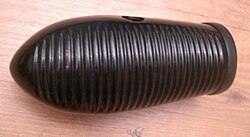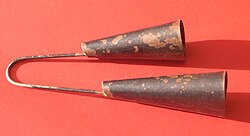
Hand percussion is a percussion instrument that is held in the hand. [1] They can be made from wood, metal or plastic, and are usually shaken, scraped, or tapped with fingers or a stick. It includes all instruments that are not drums, or any instrument that is a pitched percussion instrument, such as the marimba or the xylophone.






